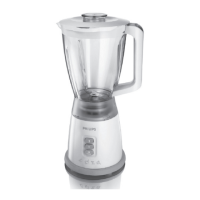Chapter 4 Fuel and exhaust systems
*
4-13
.
8.4 An exploded view of a typical accelerator
cable and pedal assembly
7 Accelerator cable
2 Return spring
3 Accebratorpedalstopper
4 Accelerator pedal assembly
5 Pedal pad
the accelerator pedal is released, with a little bit of slack. Pull the cable
(clamp-type) or turn the adjustment nut (support bracket type) until the
cable starts to lift the throttle lever off its stop, then let the cable come back
slightly (clamp-type) or back off the adjustment nut one turn (support
bracket type). To ensure the correct gap between the throttle lever and its
* stopper, insert a feeler gauge between the lever and the stopper. The cor-
rect gap is listed in this Chapter’s Specifications. Tighten the clamp bolts
or support bracket locknut.
9 Before adjusting the accelerator cable freeplay on fuel-injected en-
gines, turn off the air conditioner and all lights, warm up the engine, verify
the idle speed is correct (see Section 13, ‘I 5 or 17) stop the engine (igni-
tion switch off) and make sure there are no sharp bends in the accelerator
cable. Then, before checking the cable freeplay, turn the ignition switch to
On (with the engine stopped) and keep it in that position for 15 seconds.
This 15-second key-on/engine off interval fully extends the probe for the
idle speed control actuator.
10 The cable on 2.4L fuel-injected engines is adjusted basically the
same way as later carbureted engines with a support bracket, locknut and
adjustment nut. The cable on 3.OL fuel-injected engines is adjusted basi-
callythesamewayasearliercarburetedengineswithaclamponthevalve
cover, except it uses two bolts and slotted clips on top of the air intake ple-
num. To ensure the correct gap between the throttle lever and its stopper,
insert a feeler gauge between the lever and the stopper. The correct gap is
listed in this Chapter’s Specifications. Tighten the locknut (2.4L) or adjust-
ment bolts (3.OL) securely.
11 Now,check the accelerator pedal: It should operate smoothly and the
throttle valve must open fully by the time the accelerator pedal has been
depressed as far as it will go.
12 Periodically, apply athin coat of multi-purpose grease to theaccelera-
tor pedal pivot points.
9
Fuel h&es and vapor separator - replacement
Warning:
Gasoline is extremely flammable, so take extra precautions
when you work on any part of the fuel system. Don’t smoke or allow open
flames or bare light bulbs near the work area, and don’t work in a garage
whereanaturalgas-typeappliance (suchasa waterheaterorclothesdry-
er) with a pilot light is present. lfyou spill any fuel on your skin, rinse it off
immediately with soap and water. When you perform any kind of work on
the fuel system, wear safety glasses and have a Class B type tire extin-
guisher on hand.
Note:
Since the fuel injection system is under considerable pressure, al-
ways replace all @amps released or removed with new ones.
Fuel hoses
1
Periodically, check all rubber fuel hoses and metal fuel lines for
cracks, bends, deformation, deterioration or clogging.
2 Remove the air cleaner assembly.
3 On fuel-injected engines, relieve the fuel system pressure (see Sec-
tion 2). *
4 Disconnect the negative cable from the battery.
5 Loosen the hose clamps or bolts (if equipped), wrap a cloth around
each end of the hose to catch the residual fuel and twist and pull (clamped
on type), pull straight off (bolted-on type) or unscrew the hose (screwed-in
type) to remove the hose.
6 When replacing hoses, always use original e.quipment-type replace-
ment hose and use new hose clamps or O-rings. Pressure hoses for the
fuel injection system are made from special materials to handle the high
pressures - use only hoses made to the same high standards.
7 Connect the negative battery cable, start the engine and check for
leaks.
8 install the air cleaner assembly.
Vapor separator (carbureted models)
9 The vapor separator is the small canister mounted high on the left
front fendernell. It is mounted in the fuel system between the fuel pump
and the carburetor and is designed to prevent vapor lockcaused by high
underhood temperatures.
10 The main fueldine from the fuel pump is connected to the middle fitting
(color-coded red) leads to the carburetor accelerator pump housing
(which is also color-coded red). The hose connected to the bottom fitting
(colorcoded yellow) leads to thecarburetorfuel inlet (alsocolorcodedyel-
low).

